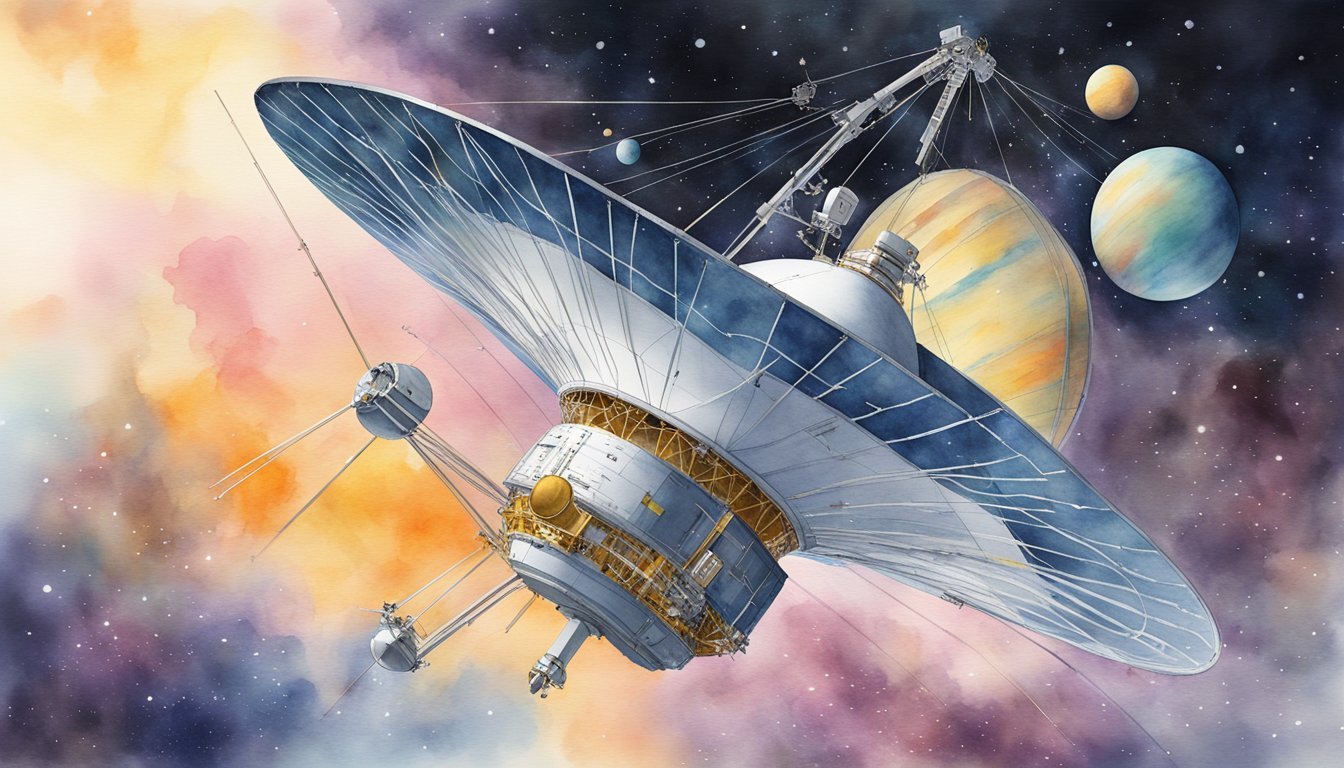Voyager 1 Mission Overview
Launch and Trajectory
Voyager 1, a NASA spacecraft, embarked on its historic journey on September 5, 1977, from Cape Canaveral, Florida, with the goal of exploring the outermost reaches of our solar system. The spacecraft, along with its twin Voyager 2, were launched to study the Jovian and Saturnian systems, providing a wealth of data about the outer solar system.
Thanks to the Jet Propulsion Laboratory’s “Eyes on the Solar System” feature, you can keep track of Voyager 1’s trajectory and velocities. In August 2012, Voyager 1 made history by entering interstellar space, the region beyond our solar system where no man-made object had ever reached before.
Voyager 1 boasts a collection of monumental discoveries including finding new moons, active volcanoes, and studying the outer planets‘ atmospheres. The spacecraft has traveled more than 40 years by 2024, and it still has much to explore.
Voyager Deep Space Network
The Voyager spacecrafts are in constant communication with Earth through the NASA Deep Space Network (DSN). The DSN is a series of ground-based antennas located at strategic spots around the globe, enabling the constant transfer of critical data and updates from these distant spacecraft.
For example, in November 2023, Voyager 1 encountered an issue that halted the transmission of readable science and engineering data. However, the spacecraft still received commands, an indication that it was operational. The Voyager engineering team at NASA’s Jet Propulsion Laboratory in Southern California confirmed the issue and successfully resumed the transmission of engineering updates from Voyager 1 to Earth.
The groundbreaking discoveries and endurance of Voyager 1 and its twin Voyager 2 have revolutionized our understanding of the solar system, and their mission continues to offer valuable insights into the universe beyond our planetary neighborhood.
Scientific Discoveries and Data Transmission

Planets and Moons Encounters
Voyager 1 has made several fascinating discoveries during its journey through the outer planets, including the four gas giants: Jupiter, Saturn, Uranus, and Neptune. It observed active volcanoes on Jupiter’s moon Io, making it one of the few known bodies in our solar system with volcanic activity (source). Additionally, it captured stunning images of the Great Red Spot and Jupiter’s thin ring system.
While exploring Saturn, Voyager 1 detected intricate details in its ring structure and discovered new moons. It also provided information on Uranus and Neptune, such as the planets’ magnetic fields and unique atmospheric features. The probe’s journey through the outer planets offered valuable insights into the formation and evolution of the solar system.
Current Operations and Communication
After completing its tour of the outer planets, Voyager 1 has now ventured into interstellar space, becoming the first human-made object to do so (source). It currently operates approximately 22.7 billion kilometers (14.1 billion miles) away from Earth, with a one-way light time of over 21 hours.
Voyager 1 communicates with Earth by sending data via radio signals, which are received by antennas in the Deep Space Network. Despite its immense distance, the probe still sends engineering updates, and recently resumed sending clear data to NASA after a brief period of unreadable transmissions (source).
The spacecraft is equipped with various scientific instruments, including the magnetometer, planetary radio astronomy, ultraviolet spectrometer, infrared interferometer spectrometer, photopolarimeter, and cosmic ray, low-energy charged particles, and plasma wave subsystems. These instruments help scientists study the heliosphere, the region of space dominated by the solar wind and the sun’s magnetic field. Voyager 1’s current mission is to explore the boundaries of the heliosphere and the interstellar medium, including the termination shock, heliopause, and heliosheath.
The probe’s incredible journey has increased our understanding of the solar system and captured the imagination of people around the world. As Voyager 1 continues its voyage into uncharted territory, it remains an enduring symbol of human curiosity and our desire to explore the cosmos.

